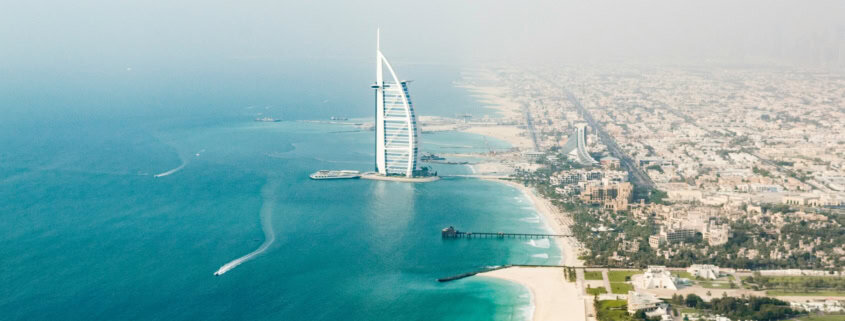Interesting Facts About the Middle East: History, Culture & Geography
The Middle East is one of the most historically rich and culturally influential regions on Earth. It is the birthplace of major world religions, home to some of the oldest civilizations, and a center of modern innovation and global energy. Stretching across parts of Asia, Africa, and Europe, it is a region where ancient history meets contemporary growth.
Below are some of the most fascinating geographic, cultural, historical, and modern facts about the Middle East — explained clearly and supported with trusted sources.
🏜️ Geographic & Natural Wonders
| Fact | Description | Where |
|---|---|---|
| The Dead Sea is the lowest point on Earth | About 420 meters (1,378 ft) below sea level | Border of Israel & Jordan |
| The region contains the world’s largest peninsula | The Arabian Peninsula covers ~3.2 million sq km | Saudi Arabia, Oman, UAE, Qatar, Bahrain, Kuwait, Yemen |
| One of the driest climates on Earth | The Rub’ al Khali (Empty Quarter) desert is nearly waterless | Saudi Arabia, Oman, UAE |
| Historic cradle of agriculture | The Fertile Crescent enabled the earliest known farming societies | Iraq, Syria, Lebanon, Israel, Egypt |
The land’s geography has shaped trade, migration, settlement, and culture for thousands of years.
🏺 Historical Significance & Civilization
| Contribution | Origin in Middle East |
|---|---|
| First cities and written language | Sumer & Mesopotamia (modern Iraq) — birthplace of cuneiform and urban society |
| Ancient Egypt | Developed pyramids, early medicine, and monumental architecture |
| Birthplace of 3 major world religions | Judaism, Christianity, and Islam all began here |
| Home to Ancient World Wonders | Pyramids of Giza, Hanging Gardens of Babylon, Lighthouse of Alexandria |
This region is often called the Cradle of Civilization because of its foundational role in human development, writing, law, science, and religion.
🎭 Culture, Languages & Traditions
The Middle East is deeply diverse, with many languages, ethnicities, and traditions.
| Language | Regions Commonly Spoken |
|---|---|
| Arabic | Most Middle Eastern countries |
| Persian (Farsi) | Iran |
| Turkish | Turkey |
| Kurdish | Iraq, Turkey, Syria, Iran |
| Hebrew | Israel |
| Berber, French, and English | Widely used across North Africa and academic/cultural contexts |
Many countries preserve oral storytelling, poetry, calligraphy, architecture, music, and cuisine passed down across centuries.

🛢️ Modern Economy, Innovation & Global Influence
| Fact | Significance |
|---|---|
| Over 50% of the world’s proven petroleum reserves are located in the Middle East | Major global energy provider |
| Rapidly modernizing cities | Dubai, Doha, Riyadh, Abu Dhabi are major business and technology hubs |
| World’s tallest building — The Burj Khalifa in Dubai | Symbol of innovative engineering |
| Coffee has origins in the region | First cultivated and brewed in Yemen before spreading globally |
| Universities of global importance | Such as American University of Beirut, Cairo University, King Saud University, and Sabancı University |
The region today is a blend of ancient cultural heritage and modern development.
✨ 10 Quick Interesting Facts (Easy to Remember)
-
The Dead Sea is so salty that people float effortlessly.
-
Cuneiform, one of the world’s earliest writing systems, developed in Mesopotamia.
-
Arabic has influenced thousands of modern words — including “algebra” and “coffee.”
-
The Persian Empire was one of the largest empires in world history.
-
More than 400 million people speak Arabic worldwide.
-
The Hajj pilgrimage in Mecca brings millions of Muslims together every year.
-
The Middle East is home to some of the oldest continuously inhabited cities, like Damascus and Jericho.
-
Olive oil, dates, and spices have been staple foods here for thousands of years.
-
Many Middle Eastern homes include majlis spaces for conversation and hospitality.
-
Camel caravans played a major role in ancient trade routes.
❓ Frequently Asked Questions (FAQs)
1. Why is the Middle East called the “Cradle of Civilization”?
Because some of the first cities, governments, writing systems, and agricultural societies originated there, especially in Mesopotamia and Egypt.
2. Which religions started in the Middle East?
Judaism, Christianity, and Islam — collectively known as the Abrahamic religions.
3. What is the most spoken language in the region?
Arabic, although Persian, Turkish, Kurdish, Hebrew, and others are also widespread.
4. Why is the region important for global energy?
Over half of the world’s confirmed petroleum reserves are located in Middle Eastern countries.
5. Which city has the world’s tallest building?
Dubai, in the United Arab Emirates, home of the Burj Khalifa.

📚 References & Source Links
| Source | Link |
|---|---|
| Idaho State University – Middle East Facts | https://www.isu.edu/history/student-opportunities/projects/middle-east-facts/ |
| Britannica – Middle East Overview | https://www.britannica.com/place/Middle-East |
| Britannica Kids – Middle East Facts | https://kids.britannica.com/kids/article/Middle-East/346176 |
| Twinkl – Top Middle East Geography Facts | https://www.twinkl.com/homework-help/geography-homework-help/the-middle-east/the-middle-east-top-10-facts |
| YouTube Educational Overview | https://www.youtube.com/watch?v=yTXEch_i7DY&t=57 |
| Wikipedia – Middle East Background | https://en.wikipedia.org/wiki/Middle_East |



